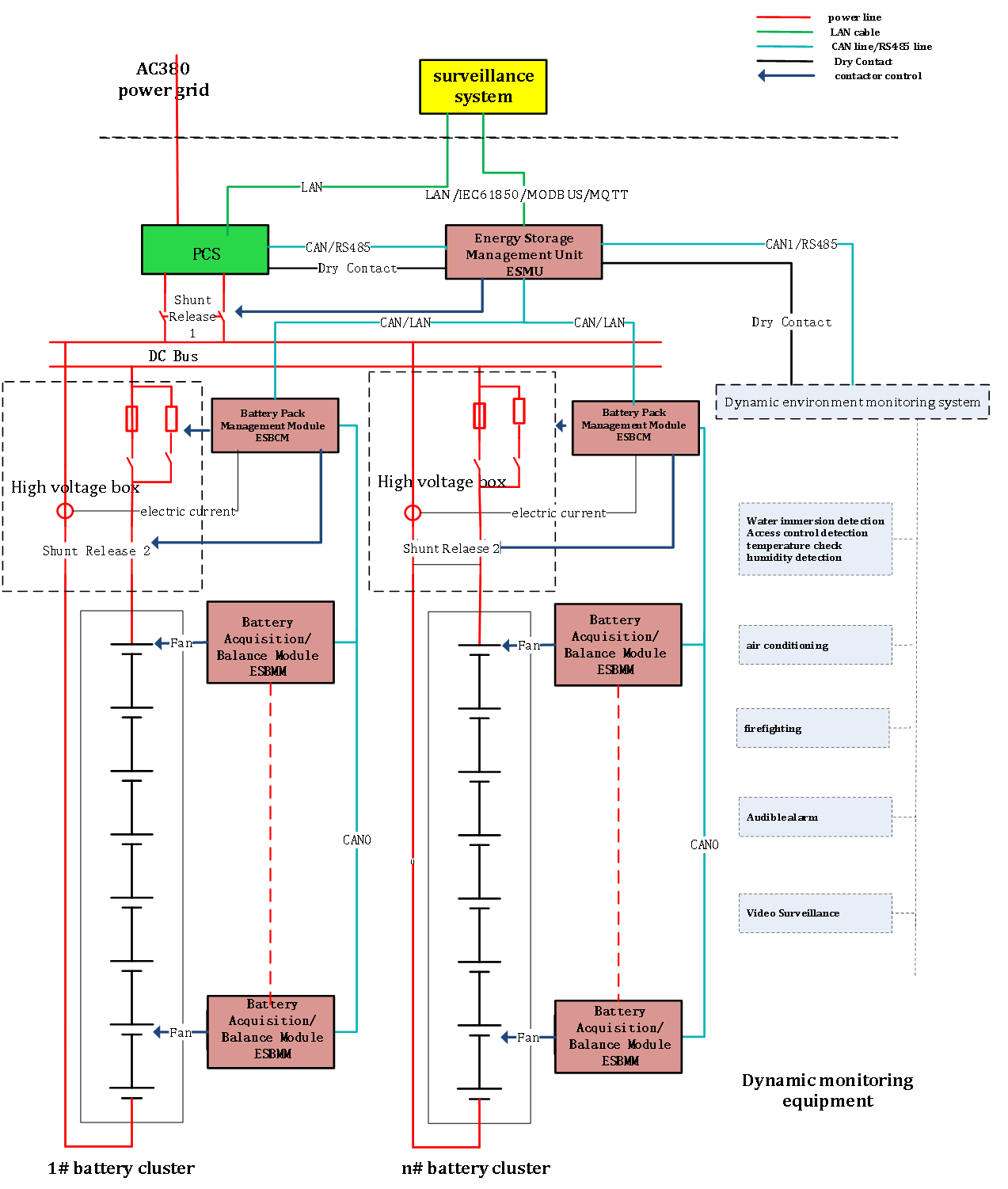ESS BMS Solutions
Decision making—EMS/EMU

GEEC: the three-level energy storage BMS architecture is the core for the new energy storage industry
Whether it is an electric vehicle, an energy storage power station, or a base station power supply, the battery is an energy storage component. The perception, decision-making and execution of the battery constitute the entire energy storage control system. BMS, as an extremely important sensing component, is the core foundation of the energy storage system and an important basis for EMS decision-making and PCS execution.

Large-scale energy storage system GEEC BMS architecture diagram (three-level BMS architecture)
- A battery energy storage system consisting of:
Multiple clusters of battery clusters and multiple PCSs, as well as a complete energy management and dispatch control system.
- Generally, the battery cluster energy storage capacity of a large-scale energy storage system ranges from:
MWh to hundreds of MWh and the conversion power ranges from hundreds of KW to tens of MW.
- Large-scale energy storage systems can be applied to:
Wind power plants
thermal power stations
substations, and large industrial
Mining enterprises
Are used for frequency Containment Reserve (FCR) and peak regulation or peak shaving and time / load shifting
- Large energy storage systems can be installed in:
Outdoor containers
Indoor screen cabinets
Indoor racks
Based on customers requirements, etc..

